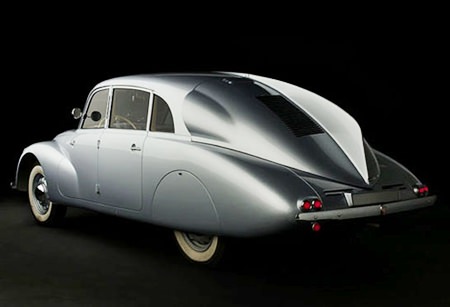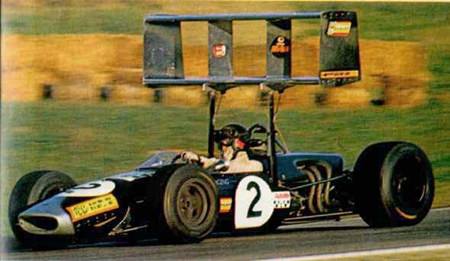Simple answer is “No”, but then again, so little of modern car design is “new”. A couple of weeks ago I mentioned the Lohner-Porsche – a hybrid dating back to 1902 for all those people who think Toyota was first with the Prius.
Similarly, the study of aerodynamics is also not a recent following, as a Benjamin Robins built a simulator in 1746 and showed that the shape of an object had tremendous influence on its ability to go through the air.
 Tatra T87.
Tatra T87.
He was followed by Sir George Cayley (born 1773) who correctly identified the aerodynamic forces of weight, lift, drag and thrust. He is considered the father of aerodynamics, a physical entity being examined over 200 years ago.
The world’s first wind tunnel was built in 1871 in the UK but it wasn’t until Wilbur and Orville managed to demonstrate that flight was possible that wind tunnels began sprouting up everywhere.
One of the earliest cars to be wind tunnel tested was Edmund Rumpler’s Tropfen-Auto round about 1910. This was also known as the ‘teardrop’ car.
 An experiment that was outlawed!
An experiment that was outlawed!
His influence was wide-reaching. And the famous Tatra T87 had the body designed by Paul Jaray, complete with curved windscreen, and that was 1936. The T87 was tested in the wind tunnel in 1979 and produced a Cd of 0.36. This was at a time where most cars had Cd’s over 0.5, including the Chrysler Airflow with a Cd of 0.546, so it really was a misnomer! Though Chrysler Battering Ram would not have been accepted by the management of the day!
What management did do was to experiment adding an undertray and extending the nose and tail, and then adding a curved false windscreen lowered the Cd to 0.238, but it was too little too late as the American buying public stayed away!
If course, these days the extremes of aerodynamic efficiency are not seen in passenger cars, but in the Formula 1 cars with their flaps and winglets as well as amazing wings.




